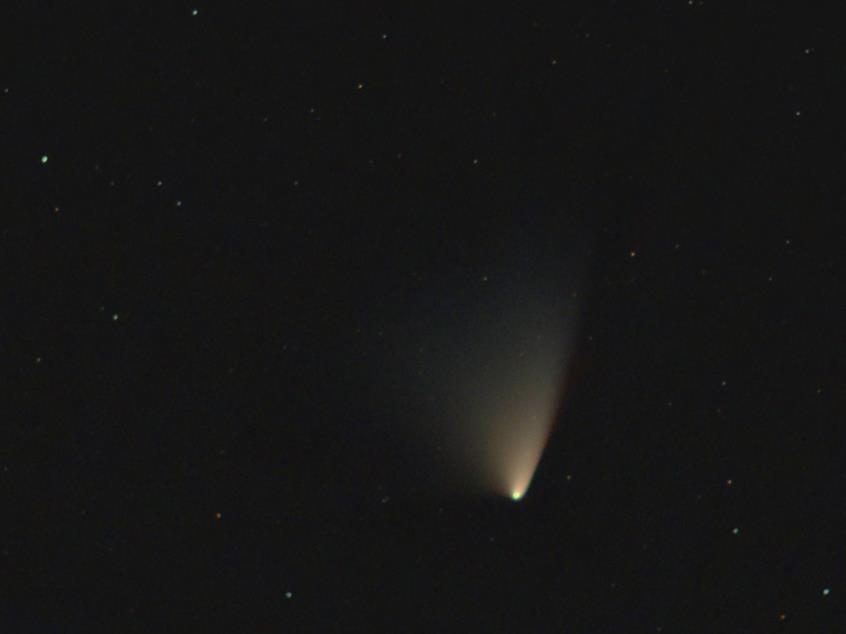C/2011 L4 (PANSTARRS) is a non-periodic comet discovered in June 2011 that became visible to the naked eye when it was near perihelion in March 2013.
It was discovered using the Pan-STARRS telescope located near the summit of Haleakalā, on the island of Maui in Hawaii.
Comet C/2011 L4 probably took millions of years to come from the Oort cloud.
After leaving the planetary region of the Solar System, the post-perihelion orbital period (epoch 2050) is estimated to be roughly 106000 years.
Dust and gas production suggests the comet nucleus is roughly 1 kilometer (0.62 mi) in diameter.
Comet C/2011 L4 was still 7.9 AU from the Sun with an apparent magnitude of 19 when it was discovered in June 2011.
By early May 2012, it had brightened to magnitude 13.5,and could be seen visually when using a large amateur telescope from a dark site.
In October 2012, the coma (expanding tenuous dust atmosphere) was estimated to be about 120,000 kilometers (75,000 miles) in diameter.
C/2011 L4 was spotted without optical aid on 7 February 2013 at a magnitude of ~6. Comet PANSTARRS was visible from both hemispheres in the first weeks of March,
and passed closest to Earth on 5 March 2013 at a distance of 1.09 AU.
It came to perihelion (closest approach to the Sun) on 10 March 2013. Original estimates predicted that C/2011 L4 would brighten to roughly apparent magnitude 0
(roughly the brightness of Alpha Centauri A or Vega).
An estimate in October 2012 predicted that it might brighten to magnitude −4 (roughly equivalent to Venus).
In January 2013 there was a noticeable brightening slowdown that suggested that it may only brighten to magnitude +1.
During February the brightness curve showed a further slowdown suggesting a perihelion magnitude of around +2.
However, a study using the secular light curve indicates that C/2011 L4 had a "slowdown event" when it was 3.6 AU from the Sun at a magnitude 5.6.
The brightness increase rate decreased and the estimated magnitude at perihelion was predicted as +3.5. Comet Halley would
be magnitude −1.0 at the same perihelion distance.
The same study
concluded that C/2011 L4 is very young and belongs to the class of
"baby comets" (i.e. those with a photometric age of less than 4 comet years).
When C/2011 L4 reached perihelion in March 2013, the actual peak magnitude turned out to be around +1, as estimated by various observers all over the planet.
However, its low altitude over the horizon made
these estimates difficult and subject to significant uncertainties,
both because of the lack of suitable reference stars in the area and
the need for differential atmospheric extinction corrections.
As of mid-March 2013, due the brightness of twilight and low elevation in the sky,
C/2011 L4 was best seen in binoculars about 40 minutes after sunset. On 17–18 March,
C/2011 L4 was near the 2.8-magnitude star Algenib (Gamma Pegasi). On 22 April, it was near Beta Cassiopeiae.
On 12–14 May, it was near Gamma Cephei. C/2011 L4 continued moving North until 28 May.
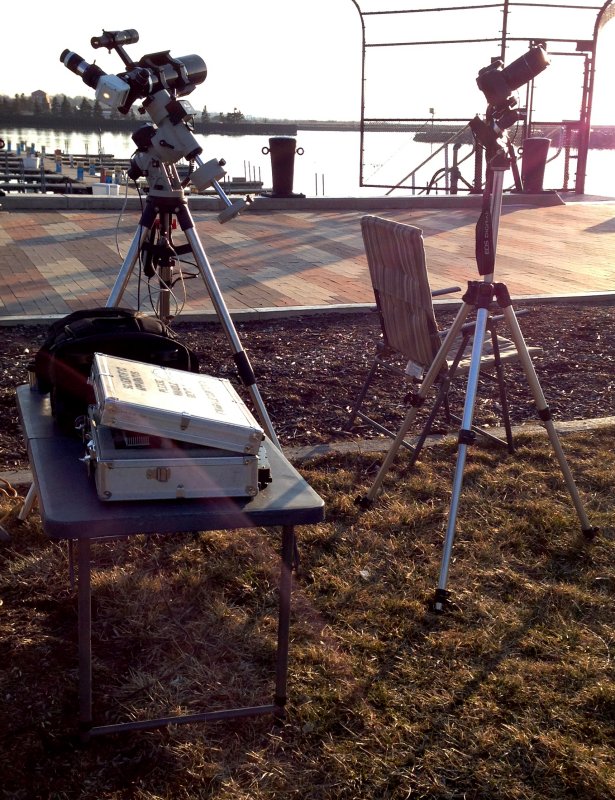

Mike
H and I went to Spitzer Marina in Lorain, Ohio on June 4th, 2014 to shoot Comet
Pannstarrs We set up our gear on the pier. I brought the Orion EON ED80
on the iOptron IEQ30 goto mount. I also brought the Bogen Manfrotto
Tripod with the Canon 60Da Astrocamera. At dark the comet will appear
low in the nort, above the building in the right picture, before moving
into the trees on the right side of the image.
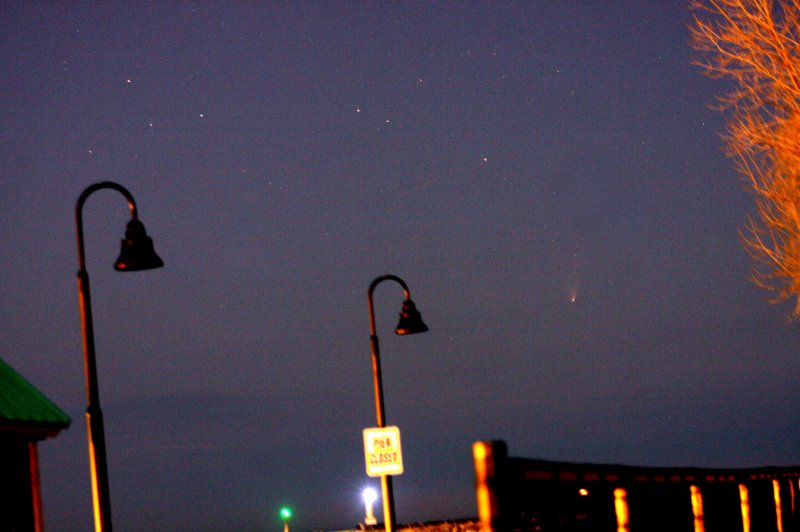
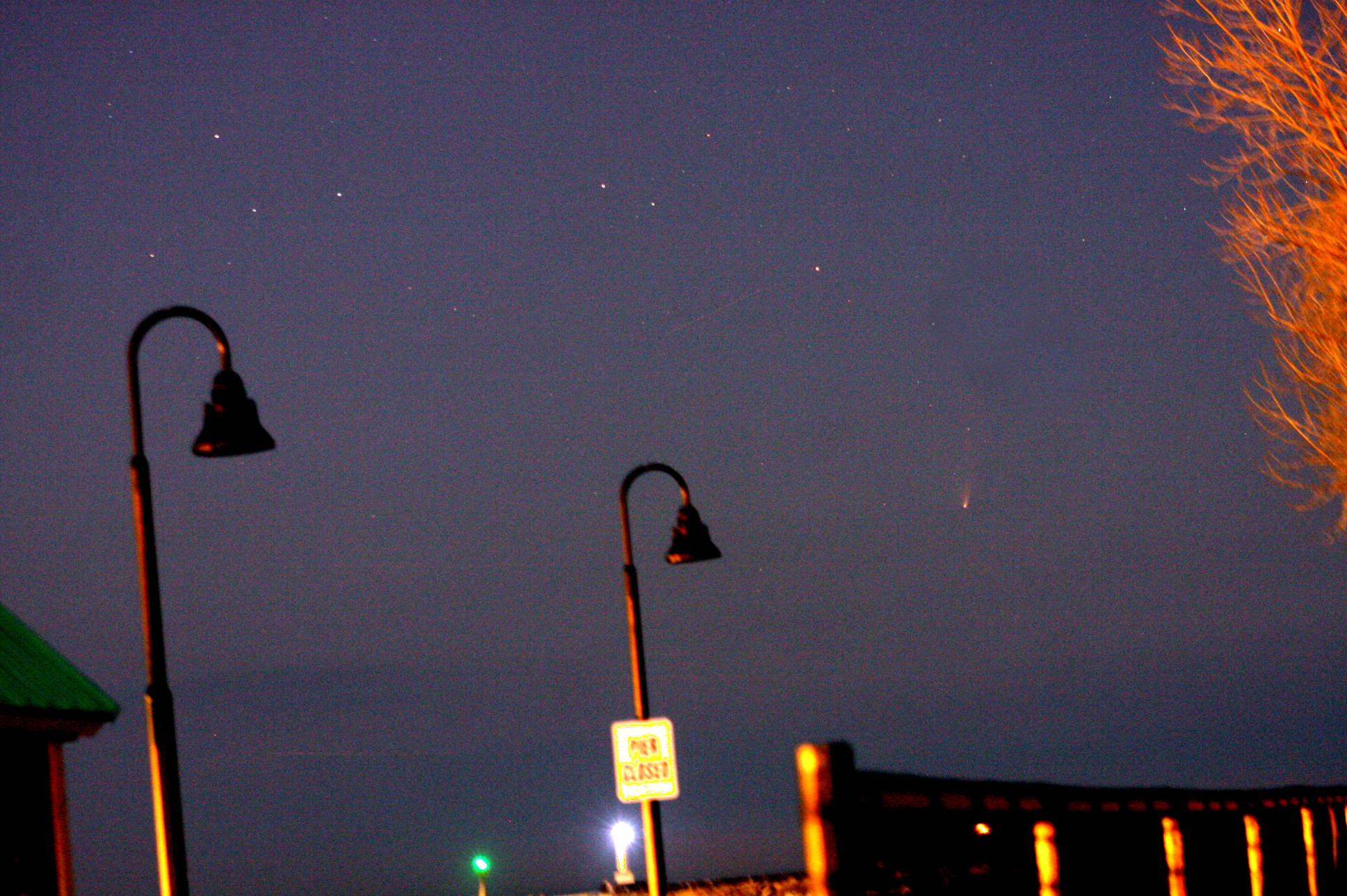
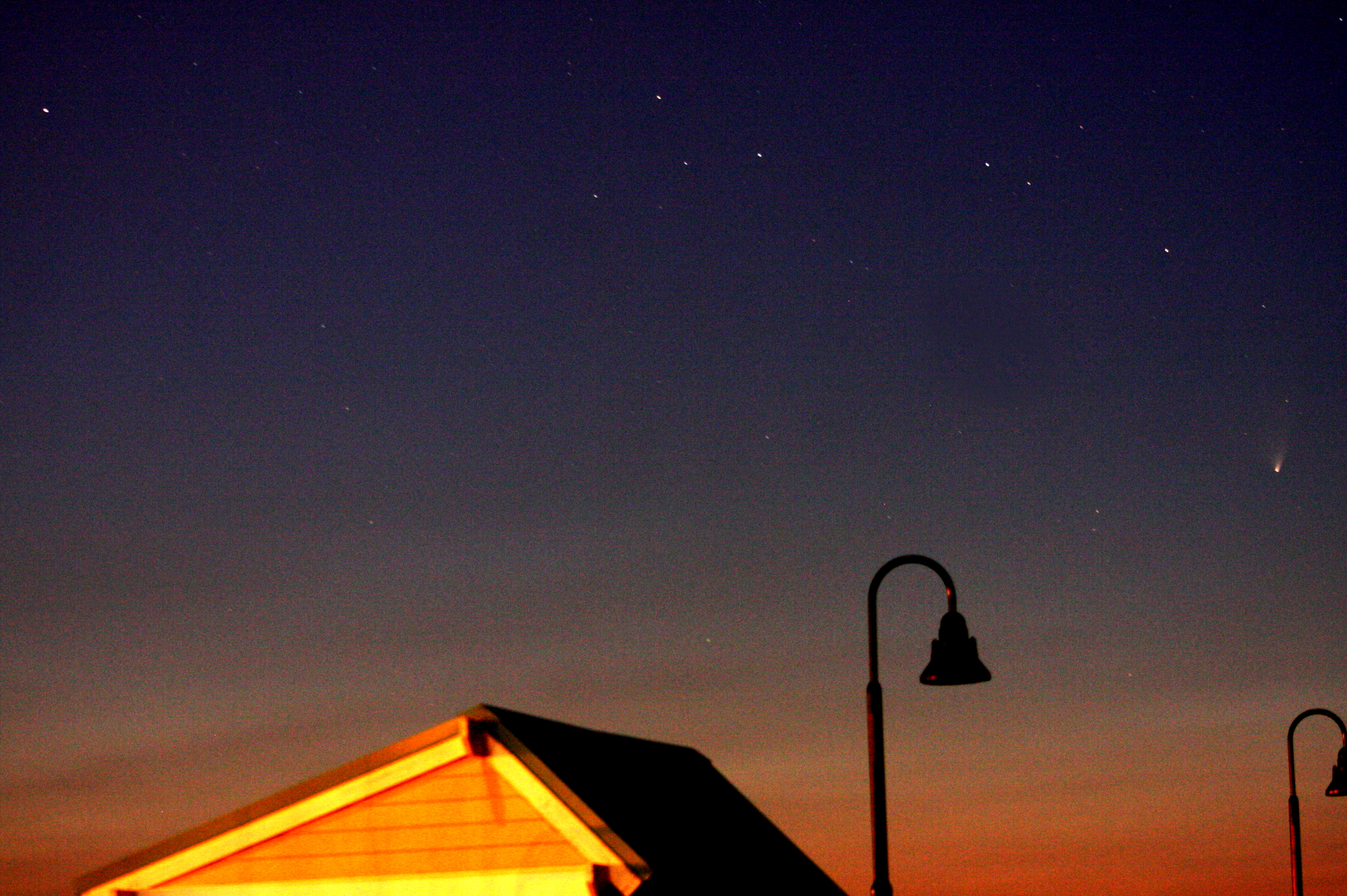
Here
are 3 images at different focal lengths showing the comet diving down
into the murky waters of Lake Erie on March 23rd, 2013.
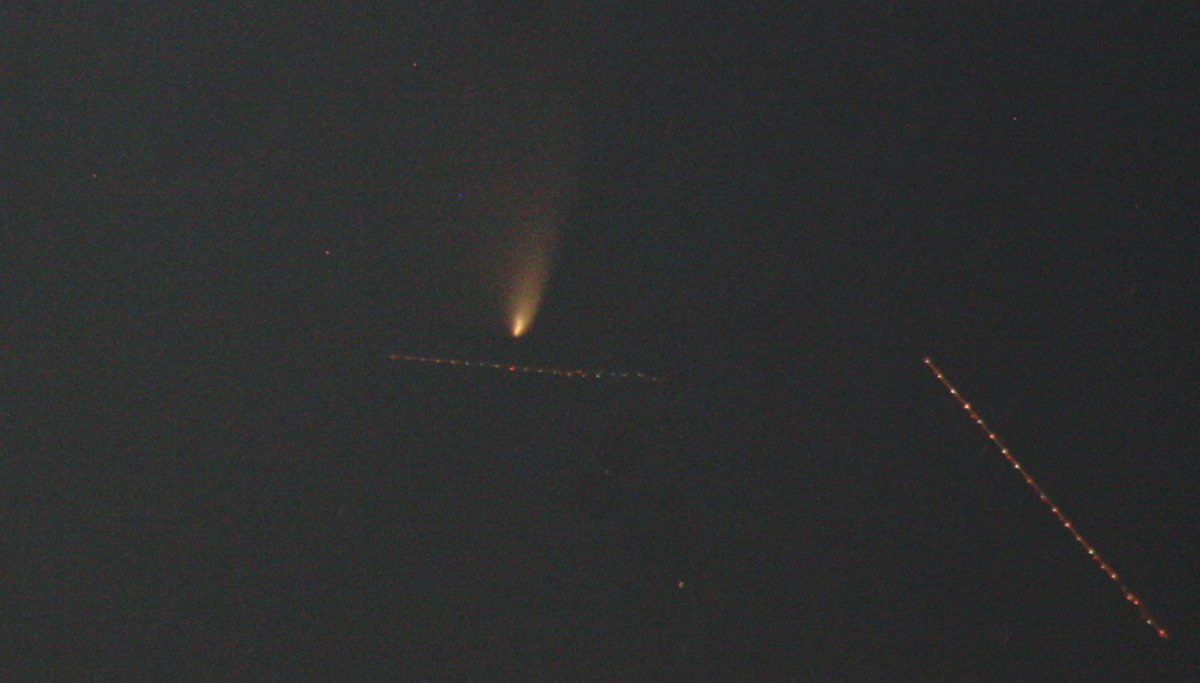
Comet Pannstarrs and planes in a circling pattern around Cleveland Hopkins Airport.
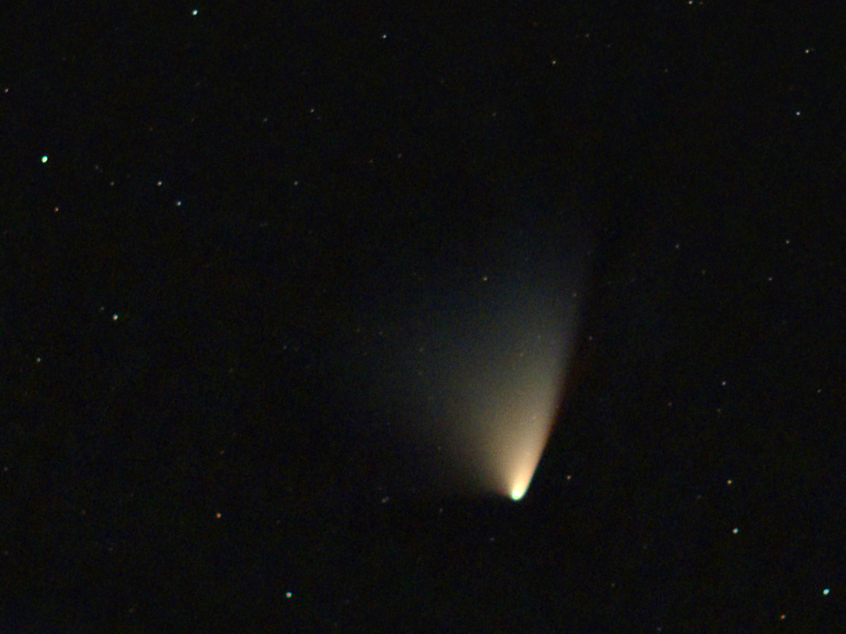
And here it is shot through the Orion EOD ED80 at prime focus on March 23rd, 2013 @ 8:13pm EST.
Waiting
for twilight was fun, but we had to wish our life giving star a good
night as he sank into the forest's welcoming bosom....
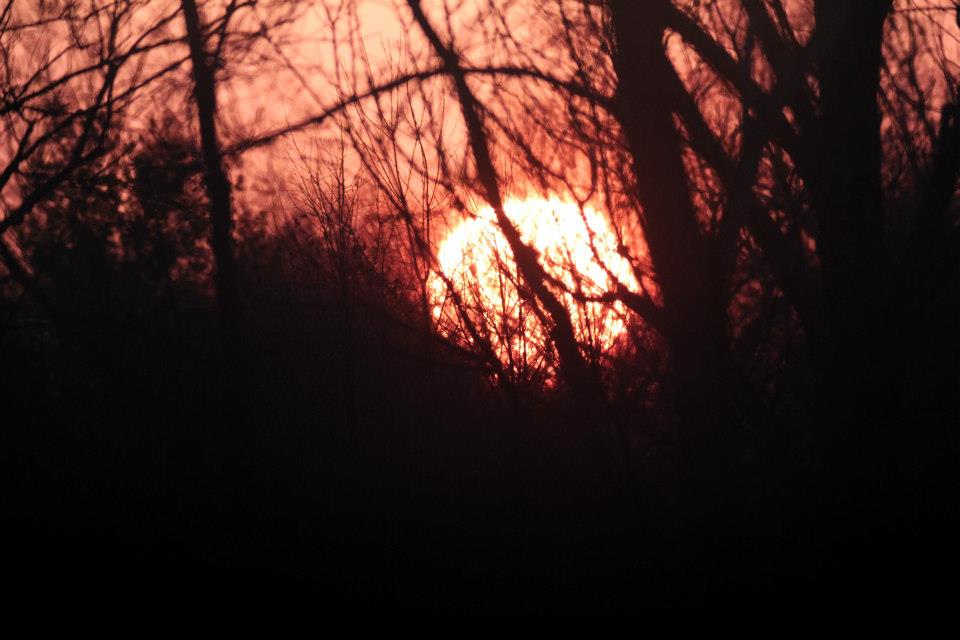 By the time we spotted the comet it was heading into the trees.
By the time we spotted the comet it was heading into the trees.
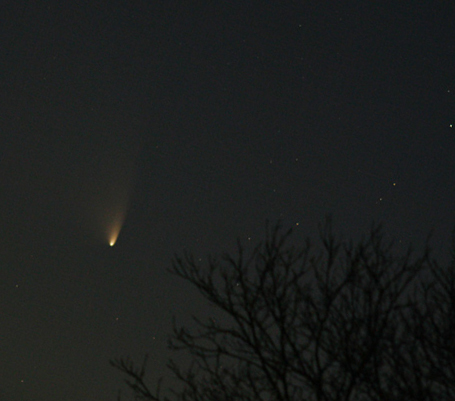
The long, graceful arcing curvature of this comet is fabulous..
